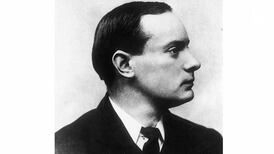As many of us prepare to head off on holidays, maps and guidebooks are the forefront of our thoughts. These days many new cars come equipped with a GPS display built into the dashboard to help us find our way. One of the very first guides for Irish motorists was published 105 years ago by Michelin, the French tyre manufacturer.
The Michelin Guide to the British Isles was first published in 1911. It followed much the same format as the original Guide Michelin that was published in France in 1900, as the Exposition Universelle was taking place in Paris. At that time, there were around 3,000 cars in France. The stated purpose of the guide was to provide drivers travelling in France with all the necessary information they needed to be able to supply their vehicle, to get it repaired and to find food and accommodation on their journey.
Optimism
The little red 400-page guide was made available free of charge to drivers through the network of Michelin stockists. When compared with today’s detailed guides, it looks extremely basic. However, it was revolutionary for its time and perfectly demonstrated André Michelin’s unquestionable marketing expertise and the company’s unbridled optimism for the future of the nascent car industry.
As well as city-centre maps for each of the larger cities, the first guide also contained detailed illustrations of essential pieces of motoring equipment, such as tyres, valves and pumps.
When Michelin’s guide to Britain and Ireland appeared in 1911, there were 5,058 cars, buses and lorries registered in Ireland.
By the time the third edition was issued in 1913, Michelin boasted that if all the guides that were distributed free every year were placed one on top of another, they would make a pile 60 times as high as London’s St Paul’s Cathedral. The family firm was not unwilling to sing its own praises. The 1913 guide lists Michelin product stockists in towns and villages all over Britain and Ireland from Aberdare in Wales to Youghal in Cork.
Trunks
Running to hundreds of pages, the guide has information on motor taxes, rules of the road, how to obtain a driving licence and advice for those who are interested in international travel.
It carries detailed maps and advertisements for newspapers, furniture, motor insurance, high-end clothing firms, touring trunks, along with a wide range of car accessories. A practical guide on how to care for your car, carry out repairs, and even how to weigh your car, is included in the book.
The Michelin man, known as Bibendum, appears throughout the manual in all sorts of comic poses – driving a car, smoking a cigar or swinging a golf club.
The bulk of the guide is made up of a list, arranged in alphabetical order, of all the attractions that can be seen and services that are available in each town and village.
Details
These include details of any historic ruins, scenes of natural beauty and the address of the towns’ mechanic, hotels, golf course or racecourse.
In total, some 354 villages, towns and cities are listed on the island of Ireland, beginning with Abbeyfeale in Co Limerick, which had a population of 932, and running to Youghal in Co Cork, with a population of 5,393. Motorists are also offered a list of suggested itineraries in Ireland, Scotland and England. A total of 14 circuits all around the island are listed.
The shortest of all the routes is “Coleraine, Ballymoney, Cushendal, the North-East Coast and the Giant’s Causeway”, which covers 75 miles. Motorists are told that they would be rewarded with “fine coast scenery” and “fine views of the magnificent headlands”, if they passed along this circuit.
Route
The longest route, which runs to 158 miles, covers “The Lakes of Galway and the West Coast”. Motorists are advised to allow two days for this excursion, which will see them depart Galway city on a bumpy road for three miles, before travelling on a variety of good and bad road surfaces. They are also told of the “magnificent views” that they can expect from the summit of Croagh Patrick and the “fine view looking backwards over the fjord” as they pass through the village of Leenane.
It would be interesting to use this guide today to navigate around the country to see how much it has changed in the last 100 years.








